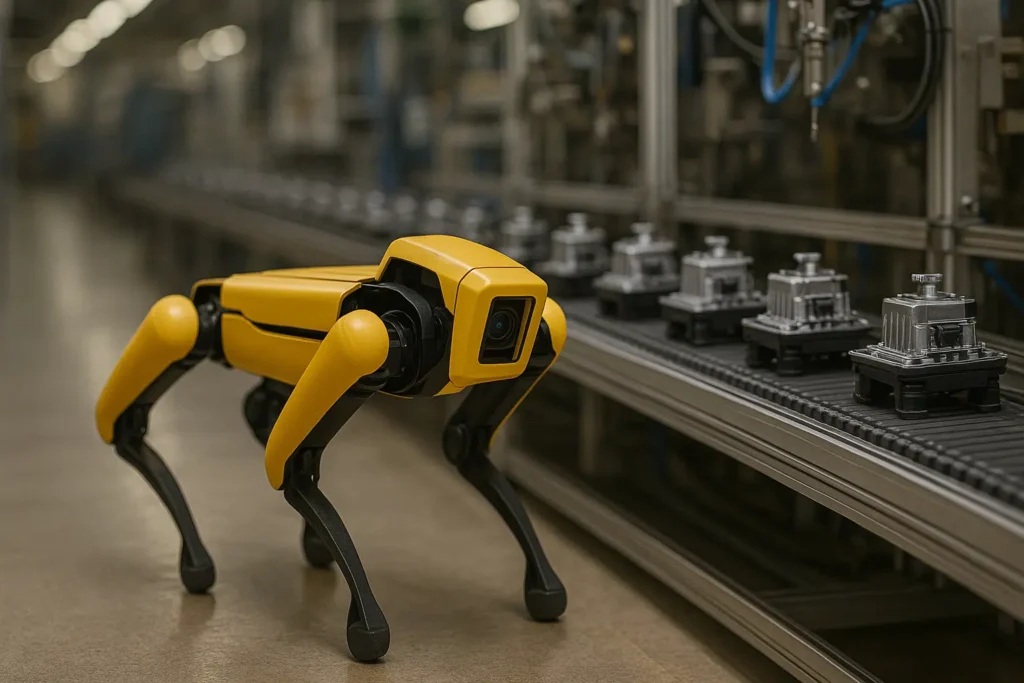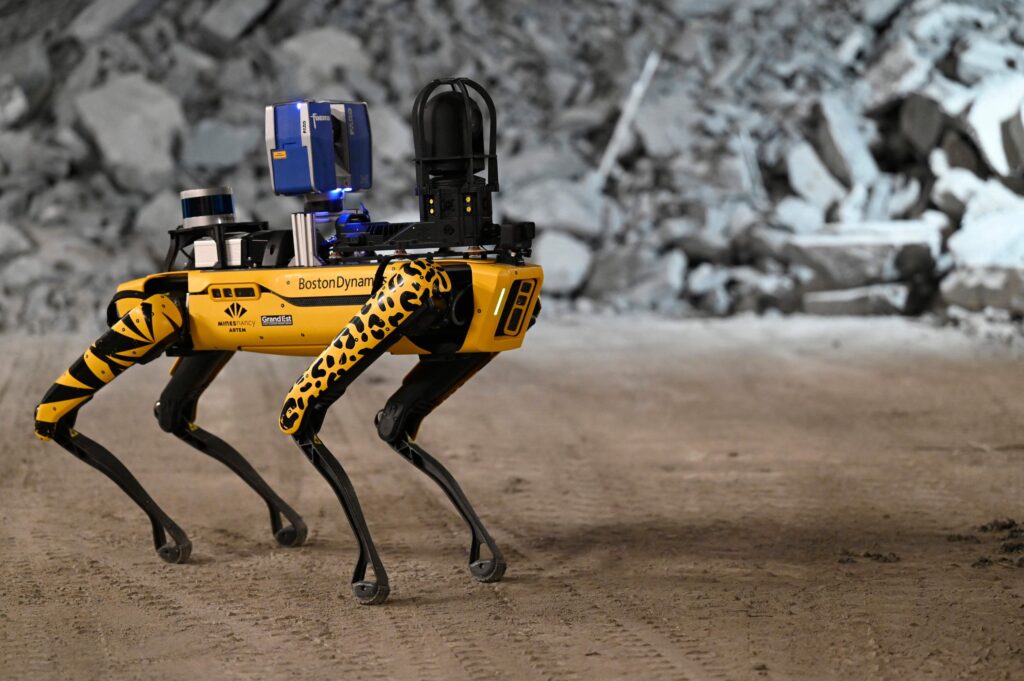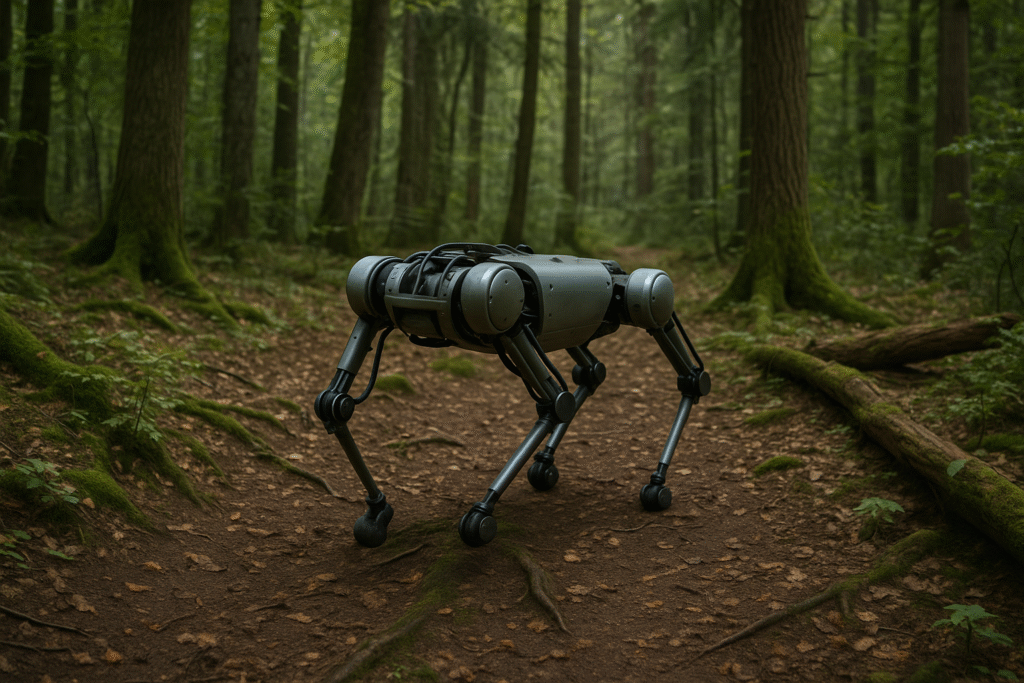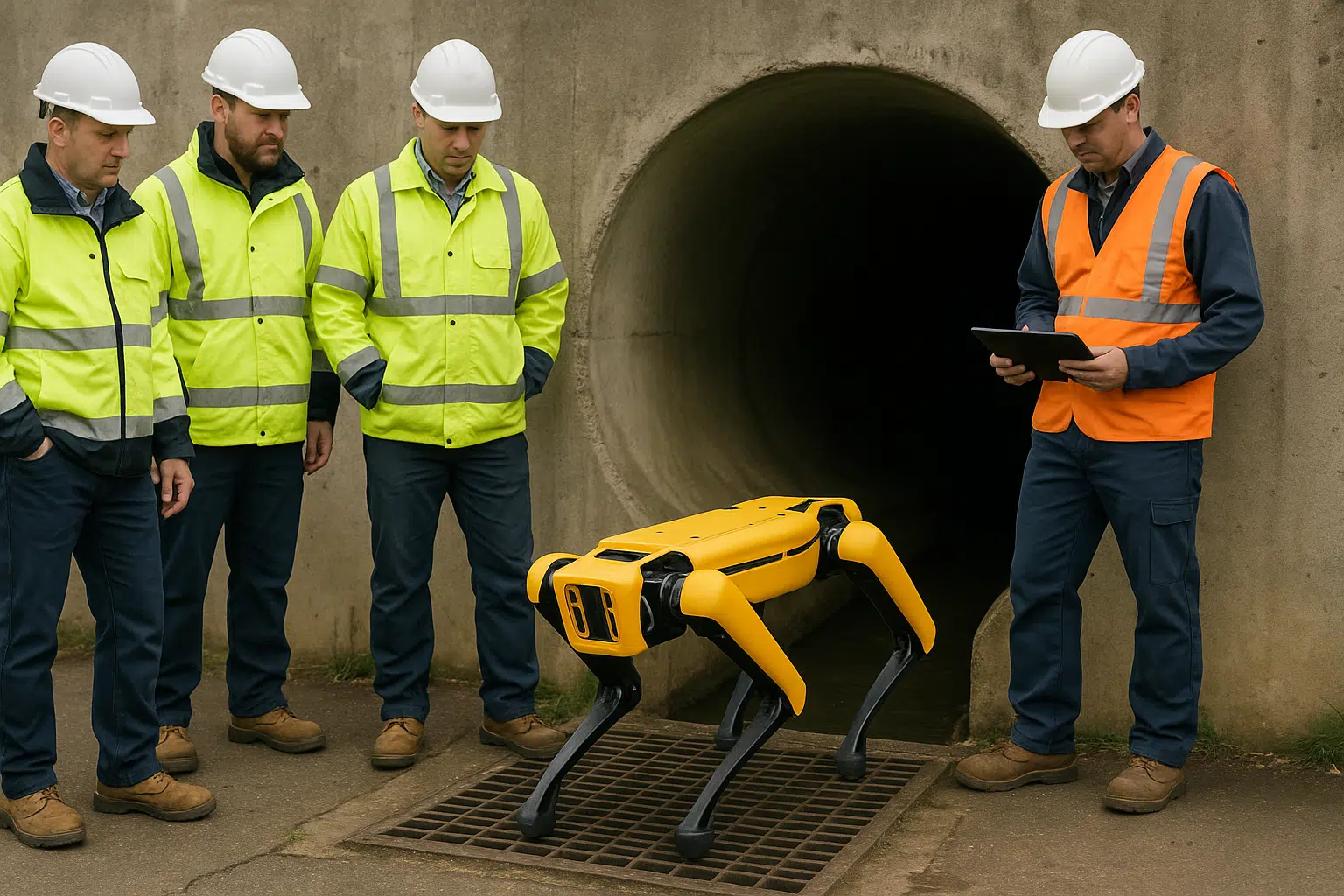In a groundbreaking development that could reshape the future of robotics and autonomous machines, the world’s first robot dog with animal reflexes has successfully walked through dense woodlands without any prior training or human intervention.
Built and tested in the UK, this highly adaptive machine imitates natural animal movement, making real time decisions based solely on environmental cues and reflex responses just like a living creature. The innovation is a major milestone in developing robots that can function independently in unpredictable, unstructured environments like forests, disaster zones, and even planetary terrains.
A Leap Forward in Robotic Mobility
Unlike traditional robotic quadrupeds that rely on pre-programmed paths or constant human input, this robot dog with animal reflexes was developed entirely using computer simulations. No outdoor field testing was required before deployment. Thanks to an AI driven simulation system, the robot learned how to respond to uneven terrain, fallen branches, and loose soil, adjusting its gait in real time to avoid falls or missteps.
The development team, based at a leading UK research institute, emphasized the machine’s naturalistic locomotion. “It doesn’t just mimic how animals move it reacts like an animal when the environment changes,” said Dr. Alice Hammond, lead robotics engineer on the project. “This level of responsive, real world movement has never been seen in a quadruped robot before.”

Expert Opinions Validate the Breakthrough
Dr. Robert Hayes, a robotics professor at the University of Cambridge, believes this innovation represents a turning point. “What we’re witnessing is the beginning of instinctive robotics. It’s not just about mobility, it’s about autonomy at a biological level,” he explains. Hayes compares the achievement to a child learning to walk except the robot dog achieved it without the months of trial and error. “It shows the power of simulated learning and the promise of reflex driven algorithms.”
Other robotics experts, like Professor Maria Zheng from MIT’s Bio Inspired Robotics Lab, see this as a foundational piece in building rescue and reconnaissance robots. “The ability to adapt on the fly, without field training, opens the door to robots that can be deployed in war zones, search missions, and even alien landscapes without needing pre-conditioning or oversight.”
Real World Applications and Case Study Analysis
A key test conducted in the dense Sherwood Forests in Nottinghamshire revealed the robot’s instinctual walking prowess. Engineers observed the robot dog with animal reflexes maneuvering across muddy trails, climbing over roots, and bypassing fallen debris all without manual control or GPS.
One case study involved releasing the robot in a completely unfamiliar forest path after a heavy rainstorm. In less than a minute, it adapted its step timing and limb flexibility, choosing the drier sides of the trail and minimizing slippage. It even paused momentarily, analyzing complex terrain before proceeding a behavior mimicking cautious animal instincts.
This performance is made possible by embedded neural control systems paired with proprioceptive sensors, which allow the robot to “feel” its footing. It doesn’t memorize maps; it interprets the terrain moment to moment.

Personal Reflections From the Development Team
One of the core AI designers, Samir Patel, shared his experience of seeing the robot in action for the first time. “We had been watching it perform in simulation for months. But when I saw it nimbly step over a tree root in real life, it felt like we had given it instincts. That moment changed how I view the future of robotics.”
Another team member, mechanical engineer Laura Chen, recalled, “When it slipped slightly and then rebalanced itself without any help I nearly cried. That reflex wasn’t something we manually coded it emerged from the way we trained it in virtual environments.”
Why Reflexive Robots Matter
This robot’s success highlights a significant shift from reactive to reflexive robotics. Traditional robots are reactive they require instructions or preprogrammed logic to respond. Reflexive robots, on the other hand, behave more like animals acting in milliseconds based on sensor feedback, not decision trees.
From military use to environmental monitoring, and from space exploration to eldercare robots, the real world potential is vast. Reflex driven mobility will reduce the need for constant reprogramming and enable real time decision making in high-risk or variable environments.
Moreover, this development signals the potential merging of biomechanics and robotics in unprecedented ways. Future robots may not only walk and run like animals but climb, burrow, and even swim with similar agility and grace.

The Path Ahead for Reflex Based Robotics
The debut of the robot dog with animal reflexes marks a pivotal moment in technological evolution. While still in its early stages, this innovation has proven that instinctual, self learning machines are not just a dream they are a developing reality.
As technology continues to evolve, and simulations become more sophisticated, we may soon see entire fleets of reflexive robots performing tasks previously thought impossible without human supervision. The robot dog with animal reflexes is more than just a machine it’s the first step toward a world where robots adapt to us not the other way around.


1 thought on “World’s First Robot Dog With Animal Reflexes Walks Through Woods Without Training”